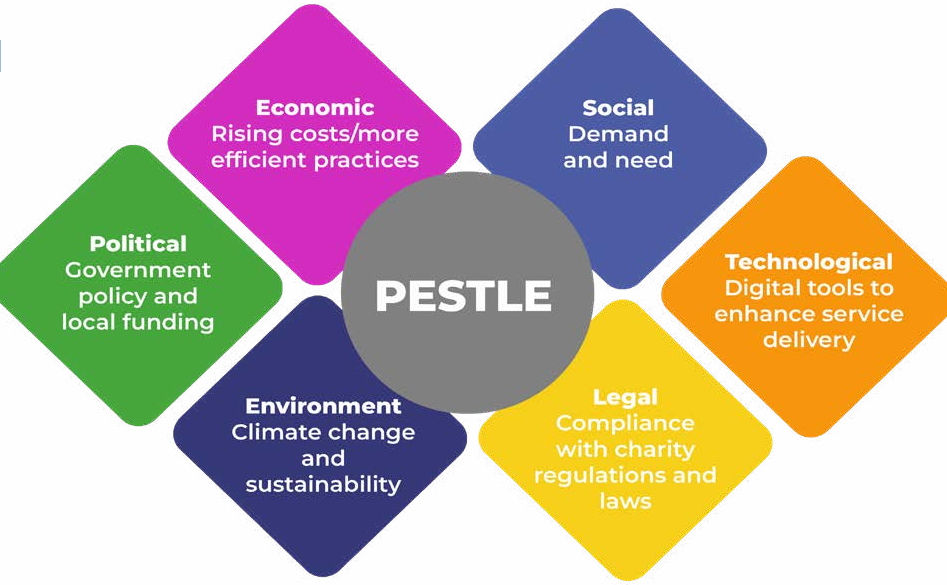Key areas to address: Not all business plans will have the same structure but there are some key elements which they should all address:
1. Organisational purpose, aims and objectives
This opening part of your business plan should cover your charity’s identity, mission, and measurable goals, ensuring the reader understands:
- Who you are: A brief history of your charity, its purpose and unique value.
- What you aim to achieve: Clearly define your mission and vision.
- What your objectives are: Set measurable short and long-term goals.
Example: Our mission is to support refugee families in Tower Hamlets by providing access to language classes, mental health support and cultural education. Our vision is a thriving community where every family feels empowered and included.
2. Pinpoint need – why your organisation is needed
Understanding client needs: Your business plan should show a deep understanding of the people you serve. It should answer these questions:
- Who are your beneficiaries? Their demographics, backgrounds, and specific characteristics.
- What challenges do they face? Economic, social, or health related.
- How are you meeting these needs? Write both immediate and long term solutions.
- What is your organisation currently doing, and on what scale? Summary of the activities that the organisation is running, including number of participants.
Example: We support elderly residents in Tower Hamlets, many of whom live alone and face isolation, financial hardship and declining health. Over 60% come from ethnic minority backgrounds and struggle with mobility and accessing services. To address this, we provide weekly social gatherings, exercise classes, and home visits. Long-term we aim to create a buddy system and advocate for accessible community spaces to combat loneliness and improve well-being.
3. Using statistics
Using relevant statistics paints a clearer picture of the community’s needs, identifies service gaps, and demonstrates your organisation’s impact.
- Opening with key facts: Use striking statistics to highlight the scale of the problem (e.g., “X% of people in [area] are affected by Y issue...”).
- Relevance to your work: Connect these statistics directly to your services, showing how you address these challenges.
- Comparative insights: If you can compare the area’s data with regional or national averages to underscore the urgency or uniqueness of the need.
Example: In Tower Hamlets, 48% of children live in poverty after housing costs, significantly higher than the London average of 32%. The borough also experiences severe income deprivation, with a score of 2.03 compared to the London benchmark of 1, highlighting widespread financial hardship among residents. These statistics highlight the need for initiatives that address poverty, improve living standards and support families (Census 2021, London Borough of Tower Hamlets).
4. Understanding internal and external strengths and weaknesses
Your business plan should set out:
- Your organisation’s strengths, weaknesses and how these were agreed.
- The external context in which you operate and how this context affects you.
Methods and tools you can use to assess your organisation’s strengths and weaknesses and external context
SWOT analysis
Is a strategic tool used to evaluate an organisation’s internal strengths and weaknesses, and external opportunities and threats. It is often used to help you to understand your current position and make informed decisions. By identifying strengths, you can take advantage of them; by recognizing weaknesses you can improve. Opportunities show potential for growth, and threats show risks to prevent.
Example:
- Strengths: Strong community partnerships, skilled volunteers.
- Weaknesses: Limited core funding, reliance on short-term grants.
- Opportunities: Expansion into nearby regions
- Threats: Economic downturn reducing donor contributions.
Thinking about and discussing these areas can benefit your organisation in many ways, from strengthening your existing resources to overcoming challenges. It also helps you take opportunities and manage potential risks. This analysis serves as a foundation for guiding your priorities, shaping decisions, and developing strategies that support your mission and goals.
PESTLE analysis
A PESTLE analysis is a strategic tool used to understand the outside factors that influence an organisation. ‘PESTLE’ represents six key areas: political, economic, social, technological, legal and environmental. Each area looks at specific external forces to understand how they affect an organisation. This analysis is particularly useful for strategic planning and decision-making and helps to identify risks and adapt to external changes. It might not be necessary for smaller voluntary and community groups to use this tool.
Every organisation’s analysis will be different, and will depend on the work you do, the time and place you are operating in and the views and ideas of the people you work with.
Using a PESTLE analysis, we can identify key drivers, for example:
